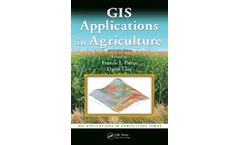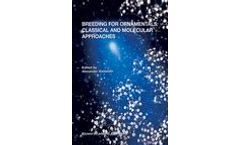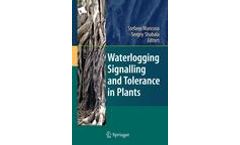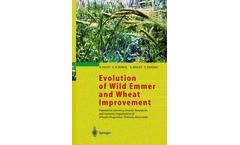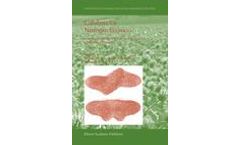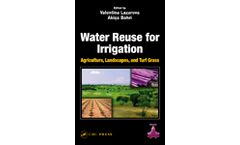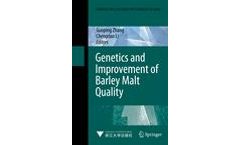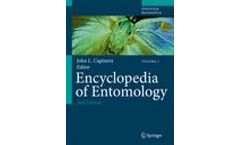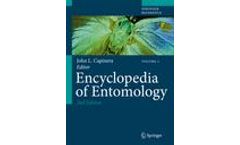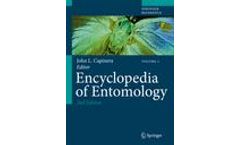Refine by
agronomy books
59 books found
The first single-source volume to cover GIS applications in agronomy, GIS Applications in Agriculture examines ways that this powerful technology can help farmers produce a greater abundance of crops with more efficiency and at ...
A celebration of role models and pioneers in our Societies who have made significant contributions to science, this publication presents both a historical dimension and a cutting-edge, current-issue perspective. Readers will find insights into the dynamics of soil-plant-environment interactions as well as the complexity of the science we use to serve society and conserve our natural resources. ...
The volume contains 10 state-of-the-art reviews of developments in specific areas of tropical agroforestry research during the past two decades, prepared by acknowledged world leaders in the respective topics, following their presentations at a one-day symposium held in connection with the annual meetings of the tri-societies of American Society of Agronomy, Crop Science ...
This volume will be invaluable to scientists working on nitrogen fixation, soil microbiology, agronomy and crop production as well as farm advisers and extension specialists. ...
This new series will cover all aspects of research on plant-microbe interactions, including beneficial plant symbioses such as symbiotic nitrogen fixation, plant pathology, plant genetics, molecular biology, agronomy, ecology, and phytochemistry. Over the past several years there has been a tremendous increase in our knowledge of plant-microbe relationships other than ...
Today adding value is more than adding yield or other agronomic traits of interest primarily to the producer. Adding value is meeting the need of a customer who is willing to pay more to receive a uniform and distinct cultivar with assurance of more oil, more protein, more malt, better amino acid composition, unique fatty acid composition, longer shelf life, better color, new uses, etc. ...
Groundnuts (peanuts) are of great economic importance internationally. This book provides thorough coverage of all aspects of the crop, each chapter being written by experts in particular areas. The book will be invaluable to all those involved with the group, particularly agronomists, plant scientists and food scientists. ...
In this book we bring together the most up-to-date information on developments, both basic and applied, that already have or are expected to impact the field of ornamental breeding. These include classical and molecular techniques, traditional and high-throughput approaches and future trends. Since not only professional scientists, but also thousands of future scientists/students as well as ...
''The editors are to be congratulated in compiling this volume which should not be missing from the bookshelf of any thysanopterist, agronomist or entomologist, encountering this unusual but fascinating order of insects.'' --- Bulletin of Entomological Research, 1998 ...
Waterlogging is a major problem for plant cultivation in many regions of the world. This book combines both academic and practical aspects of this topic. Based on recent progress in cell and molecular biology, various facets of waterlogging signalling and tolerance are addressed, starting from the molecular level, through membrane transport, cells and plant organs, up to the whole organism. ...
This book gives a comprehensive overview of our present molecular biological knowledge about the Rhizobiaceae, which currently can be called the best studied family of soil bacteria. For many centuries they have attracted the attention of scientists because of their capacity to associate with plants and as a consequence also to specifically modify plant development. Some of these ...
Wild emmer is the progenitor of most cultivated wheats and thus an important source of wheat improvement. This book draws the results from multidisciplinary studies on the ecological, genetic, genomic, agronomic, and evolutionary aspects of wild emmer, conducted at many labs around the world.It is divided into the following parts: Origin and Evolution of Wheat - Population Genetics of Wild Emmer ...
Biological nitrogen fixation provides more than 50% of the total annual input of the essential element nitrogen to world agriculture. Thus, it is of immense agronomic importance and critical to food supplies, particularly in developing countries. This book, with chapters authored by internationally renowned experts, provides a comprehensive and detailed account of the fascinating history of the ...
Water reuse programs worldwide face a number of technical, economic, and regulatory challenges related to the long-term environmental, agronomic, and health impacts of the recycling of reclaimed water. Also, the economic benefit of water reuse in irrigation is difficult to determine, and must be weighed against environmental costs, making the decisions of wastewater engineers, administrators, and ...
Genetics and Improvement of Barley Malt Quality presents up-to-date developments in barley production and breeding. The book is divided into nine chapters, including barley production and consumption, germplasm and utilization, chemical composition, protein and protein components, carbohydrates and sugars, starch degrading enzymes, endosperm cell walls and malting quality, genomics and malting ...
The Encyclopedia of Entomology brings together the expertise of more than 450 distinguished entomologists from 40 countries to provide a worldwide overview of insects and their close relatives. Combining the basic science of an introductory text with accurate, comprehensive detail, the Encyclopedia is a reliable first source of reference for students and working professionals. Coverage includes ...
The Encyclopedia of Entomology brings together the expertise of more than 450 distinguished entomologists from 40 countries to provide a worldwide overview of insects and their close relatives. Combining the basic science of an introductory text with accurate, comprehensive detail, the Encyclopedia is a reliable first source of reference for students and working professionals. Coverage includes ...
The Encyclopedia of Entomology brings together the expertise of more than 450 distinguished entomologists from 40 countries to provide a worldwide overview of insects and their close relatives. Combining the basic science of an introductory text with accurate, comprehensive detail, the Encyclopedia is a reliable first source of reference for students and working professionals. Coverage includes ...
Diazotrophic bacteria convert atmospheric nitrogen to plant-useable form and this input of nitrogen through biological fixation is of great agronomic importance. The contributions presented in this volume relate to free-living nitrogen fixers and the diazotrophs associated with plants. Symbiotic association of Frankia with non-legumes and cyanobacterial associations are also discussed. ...
Dramatic examples of genetic enhancement of seed quality exist relative to hardness, germination, protein quality and quantity, oil, and many other traits. Maintenance of seed quality is also paramount in the preservation of biodiversity. Readers first learn fundamentals of preserving and enhancing good agronomic seed quality as well as specific disease and deteoriation mechanisms. Succeeding ...

